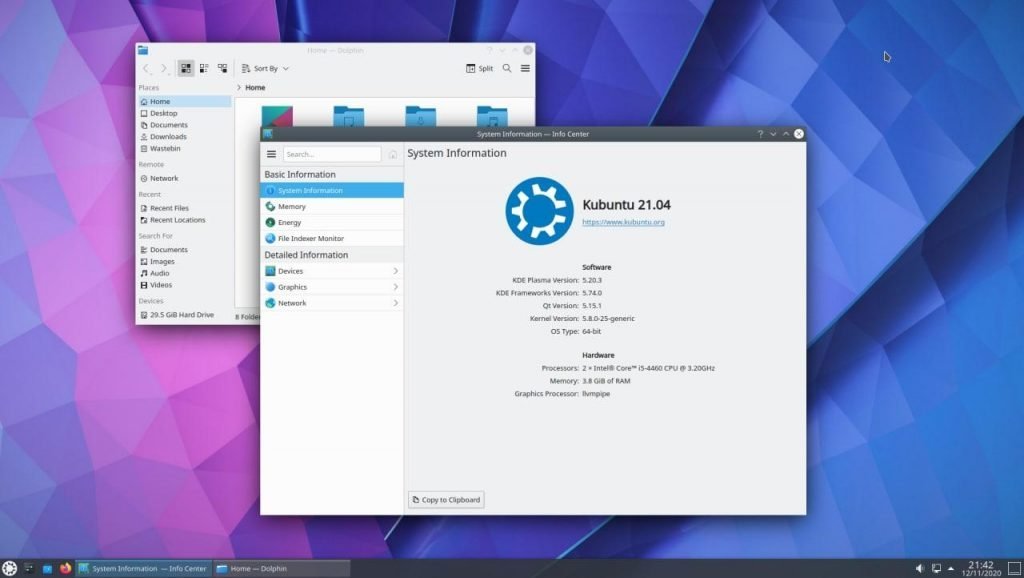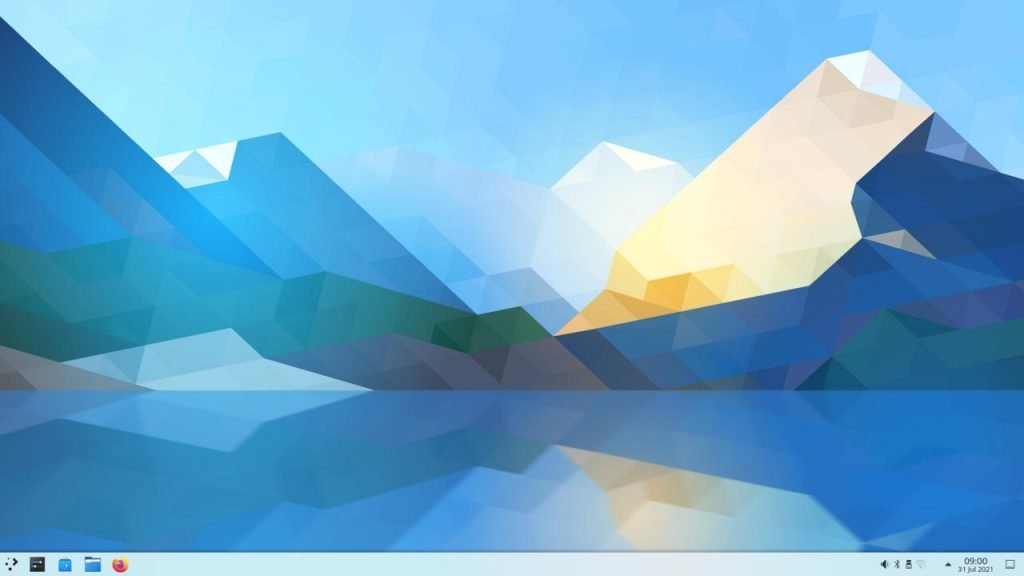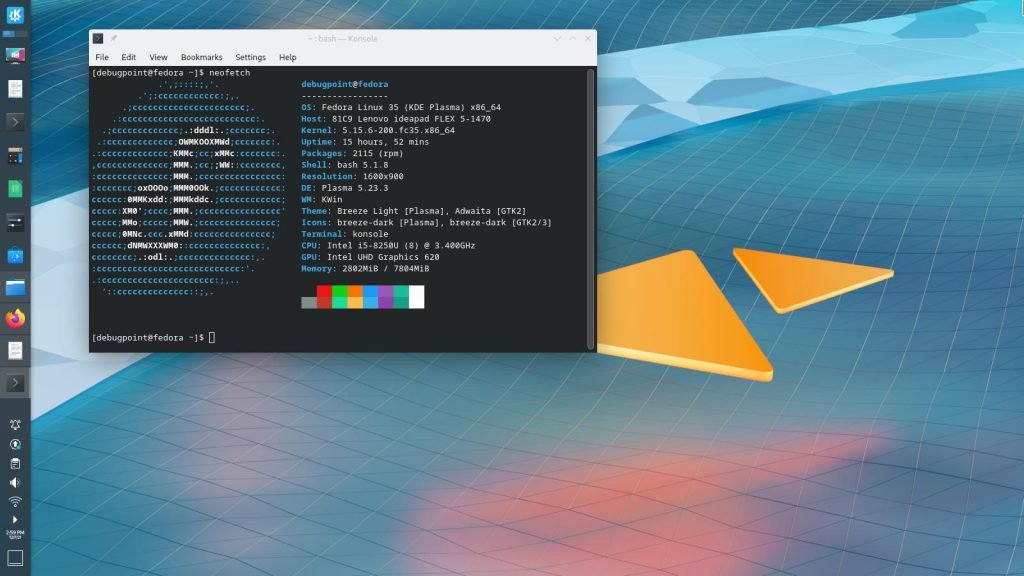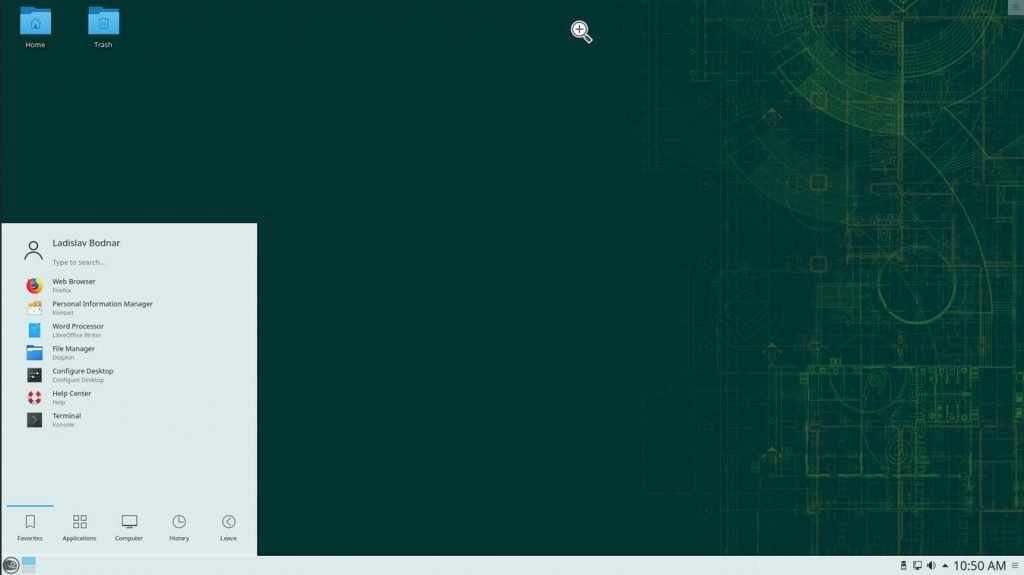Are you planning to adopt a stable KDE Plasma-based desktop in Linux and thinking about it as a daily driver? Well, here we present the top 10 Linux distributions better integrated with KDE Plasma.
KDE Plasma desktop is used by millions today. And with an active set of developers and community, it is improving every day with new features aligning with technology trends. The KDE technology evolved over the years to reach a point where it is now running on desktops, laptops, tabs, mobile phones and hand-held gaming devices. It’s incredible, isn’t it, for a desktop environment?
Often, I hear or read about bugs in KDE Desktop, or it is being termed as “too many options” compared to GNOME. I agree with that. But we can not ignore the fact that despite all those arguments & opinions – the KDE Plasma desktop is a “go-to” solution for any individual or enterprise use case. It has a well-established road map, built on unique Qt technology that can even run on automobiles and other platforms, Plus a dedicated foundation with a huge set of developers working every day to polish this desktop.
That brings me to the purpose of writing this article. There are hundreds of Linux distributions featuring the KDE Plasma desktop. But which one to choose? What are their advantages or disadvantages? Which is best for me? We try to cover all these questions in this article and help you decide on your own.
Table of Contents
Top 10 Linux Distributions for KDE Plasma Desktop
I have compiled the following list in terms of use cases and not much in technical terms – such as installation, terminal usage, etc.
Kubuntu

Kubuntu is an official KDE Plasma Desktop flavour of the Ubuntu Linux operating system. It uses the same set of Ubuntu underlying packages and follows the Ubuntu release schedule. That means it releases a new version when Ubuntu does. As it is based on Ubuntu, you get a huge amount of help and support from the community with the Kubuntu flavour. This official Ubuntu flavour is the most used KDE Plasma desktop today.
Pros
- It is a very stable system in terms of bugs – both LTS and non-LTS versions.
- LTS versions have five years of support.
- Huge community-based help system.
- Easy to use.
Cons
- Delay of around six months to receive the latest from the KDE Plasma desktop. The reason is the stability that Ubuntu requires.
KDE Neon
KDE Neon is the official Linux distribution which features the latest KDE Plasma Desktop, KDE Framework and KDE Applications from KDE Community. This Linux distribution directly comes from the KDE Development team and is based on Ubuntu.
KDE Neon comes in two variants. A User Edition and a Developer’s Edition.
The User Edition is for everyone who wants to experience the latest KDE Plasma desktop that is tested and ready to use. But it may have some little bugs – but not a dealbreaker if you ask me. The Developer edition is, as it says, for developers with cutting-edge packages. This is ideal for those who are a little experienced in the Linux platform and have time to get around occasional problems. But this is also reasonably stable.

Pros
- Latest KDE Applications, Packages and Framework.
- Based on the Ubuntu base.
- First to receive new KDE Plasma Versions.
.Cons
- It May contain occasional bugs.
3. Fedora KDE Edition
Fedora Linux is an RPM package manager-based Linux distribution that is community-supported and owned by Red Hat. This free and open-source Linux distribution features leading-edge packages and technology and supports a KDE Plasma edition. Although its official edition features a GNOME desktop, but an official KDE Plasma “spin” is available. You get the latest KDE Packages with each Fedora release, which happens twice a year. Ideally, it’s similar to Kubuntu; the only difference is its underlying package management and a different sponsoring company.

Pros
- Well-designed and stable Linux Distribution.
- New KDE Plasma releases twice a year.
- Suitable for new and advanced users.
- Versatile community support.
Cons
- Fedora Linux with KDE may feel a little complex for absolutely new Linux users
4. OpenSUSE KDE Edition
The openSUSE is a complete Linux Distribution targeted at new and experienced users. This is sponsored by SUSE Linux and other companies. It supports KDE Plasma desktop as one of the desktop offerings. With OpenSUSE KDE Edition, you can get a rolling release version (aka Tumbleweed) with the latest KDE technology and a long-term-support version with stable and well-tested KDE Plasma (aka Leap). If you’re a non-Ubuntu, non-Fedora KDE Plasma flavour, then this is the one you should choose.

Pros
- Well-established Linux Distribution commercially, hence a quality Linux with KDE.
- Provides both rolling and long-term-support release.
- Support a wide variety of hardware out of the box (single board devices, thin client terminals, desktops, laptops, PowerPC, and more).
Cons
- Probably a less famous Linux Distribution; hence free support via forums might be less
5. Manjaro KDE Edition
Manjaro Linux is an Arch Linux-based Linux distribution that follows a rolling release model. It is a very fast, user-friendly desktop operating system which gives several benefits such as automatic hardware detection, multiple Linux Kernel support and well-designed configuration settings. Both Manjaro and KDE Plasma are perfect for those with a little knowledge of Linux who want to experience Arch Linux with KDE.
Pros
- Rolling release brings the latest KDE Plasma Desktop packages within a week or two after the official Plasma release.
- Provides options to GUI installers for Arch.
- Good community support via forums.
Cons
- Arch Linux-based distributions sometimes become buggy and unstable due to continuous package updates.
- It May not be suitable for absolutely new users or those aiming for a stable system that runs for multiple years without re-installation.
6. EndeavourOS KDE Edition
EndeavourOS is a popular Arch-Linux-based Linux distribution that supports KDE Plasma as one of its offerings. It provides an easy-to-use installation and pre-configured desktop environment. One of the best-selling points of this Linux is you get to choose what you install and GUI-based desktop-tweak scripts that come preloaded. A growling Linux distribution which looks promising.
Pros
- Easy installation for Arch Linux based – KDE Plasma Desktop.
- One-click ready-made scripts to perform various desktop actions (such as updates).
- Supports multiple Linux Kernel versions for Arch.
- Perfect for new users who want to experience and learn Arch with KDE Plasma.
Cons
- Fairly new Linux Distribution and community-supported.
- It is difficult to commit to this distribution if you are an organization planning to adopt KDE Plasma with this flavour for multiple installation units.
7. MX Linux KDE Edition
MX Linux is a Linux distribution based on Debian’s Stable branch. Debian is a universal Linux operating system, the father of Ubuntu and all its derivatives. It’s the core of all those Linux distributions. It rarely breaks and gives you an unstable system. With the power of Debian, MX Linux brings its flavours by providing its in-house utilities and packages. Its KDE edition is perfect for all users, especially if you want a stable KDE Desktop that has run for years. But you may not get the latest technology immediately, as Debian’s release cycle has been slower for years. That means that to get the latest KDE plasma technology, you may need to wait 1.5 to 2 years.
Pros
- Stable Linux with well-tested KDE Plasma packages.
- It can be suitable for systems where stability trumps the latest features.
- Suitable for new users and advanced ones.
- Provides good coverage for low-end and older hardware.
- It is one of the best in-house utilities provided by MX Linux for various desktop tasks.
Cons
- It follows Debian’s stable releases. Hence, KDE Plasma desktop version upgrades take years to reach you.
8. Garuda Linux
Garuda Linux is also an Arch-based rolling release distribution that provides the KDE Plasma desktop as it’s one of the flavours. It has an easy-to-use Calamares installer and other graphical tools to manage your desktop.
The significant difference between Garuda and other Arch-based distributions is it provides some tools out of the box for managing your system performance. Some of them are Zram, CPU Governor, and custom tools for memory management.
Pros
- Arch-based Linux with custom tools for memory management.
- Official KDE Plasma flavour.
Cons
- A new Linux distribution, with its first release in March 2020.
- It requires relatively high-end hardware to work correctly (Minimum 8GB RAM, 40 GB Storage).
9. Nitrux
This is a unique Linux distribution for KDE Plasma. I wanted to add this to this list because of only the out-of-the-box looks it provides. Nitrux is a Linux distribution based on Debian’s unstable SID branch. This only provides a customized KDE Plasma desktop that is enhanced with “plasmoids”, and Kvantum themes. Technically, the desktop is called NX-Desktop, a KDE Plasma variant with all those look and feel changes. This Linux distribution provides the latest KDE Plasma tech based on the Debian unstable branch and uses AppImage for application deployments.
Pros
- One of the best-customized versions of the KDE Plasma desktop is available out of the box.
- Aesthetically pleasing with Nitrix icons and themes with the power of Kvuntum.
- Support of AppImage.
Cons
- Sometimes, it is unstable due to the Debian SID branch.
- Complete dependency on AppImage sometimes creates a problem.
- It is not a suitable distribution for beginner users of KDE Plasma.
10. KaOS
The final distribution I would like to mention here is KaOS because of its uniqueness. KaOS is a specially designed Linux distribution that provides a bleeding-edge KDE Plasma desktop with a special focus on Qt and KDE. It is a rolling release Linux distribution and not based on Ubuntu/Fedora. It is an independent Linux distribution. Furthermore, it provides packages via in-house repositories that provide extra quality over direct packages from Arch Linux. It is only available for 64-bit systems.
Pros
- Well-designed KDE Plasma ready to use for new users
- Rolling release with in-house repository gives the latest KDE Plasma with extra quality in terms of stability
Cons
- Not so popular, and hence you may get less support in forums and Google searches.
Honorary Mentions of other KDE Plasma-based Linux distributions
Debian stable with KDE
Apart from the above list, you may want to check out vanilla Debian stable with KDE Desktop installed from scratch. That would give you the stability of Debian with the customized KDE packages you want. You can follow our Debian installation guide to get it going.
Q4OS
Also, one of the Linux distributions I think needed a mention here – is Q4OS. The reason is it provides a Trinity desktop environment, which is a KDE 3 fork. Not the latest KDE Plasma 5+ series. The earlier KDE 3 version was adorable, with its own set of aesthetics. Those who like earlier KDE Desktop and widgets may want to check out Q4OS.
Ultramarine Linux with KDE
It is a new distribution which is based on Fedora Linux. Ultramarine is handcrafted on top of the Fedora base to give you the ultimate experience. Although it features Budgie, Pantheon, and GNOME – it also features a KDE Plasma desktop version. You can download it from here.
How do you find the best KDE Plasma Linux distribution for you?
When deciding on a Linux distribution and Desktop environment, several factors are involved. For example, you might always need bleeding-edge latest KDE tech, and it’s okay if it’s a little unstable. On the other hand, you might need rock-solid stability and may not require the latest KDE tech. So, holding on to that thought, here’s a quick comparison table we prepared for you to help you decide.

Conclusion
We have covered a list of the best Linux distributions that feature the KDE Plasma desktop. We also listed some pros and cons with comparisons. Now, choosing which is best for you or your team/school/organization is up to you. But honestly, that depends on the use case, your situation, or the problem you are trying to solve by adopting the KDE Plasma desktop.
The choice is subjective, and everyone has a different taste. With that in mind, I hope this gives you guidance in adopting a KDE Plasma desktop with perfect Linux distribution. Let me know your opinion on the above list and the comparison in the comment box below.
Updated with the latest information and added a few more distributions – 11/25/2023.